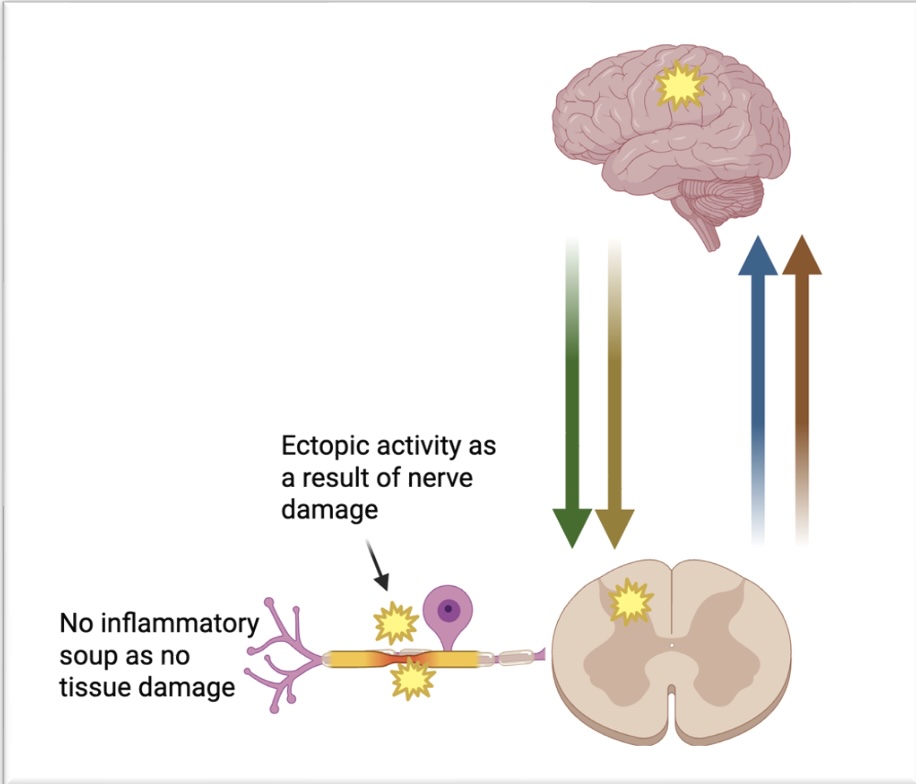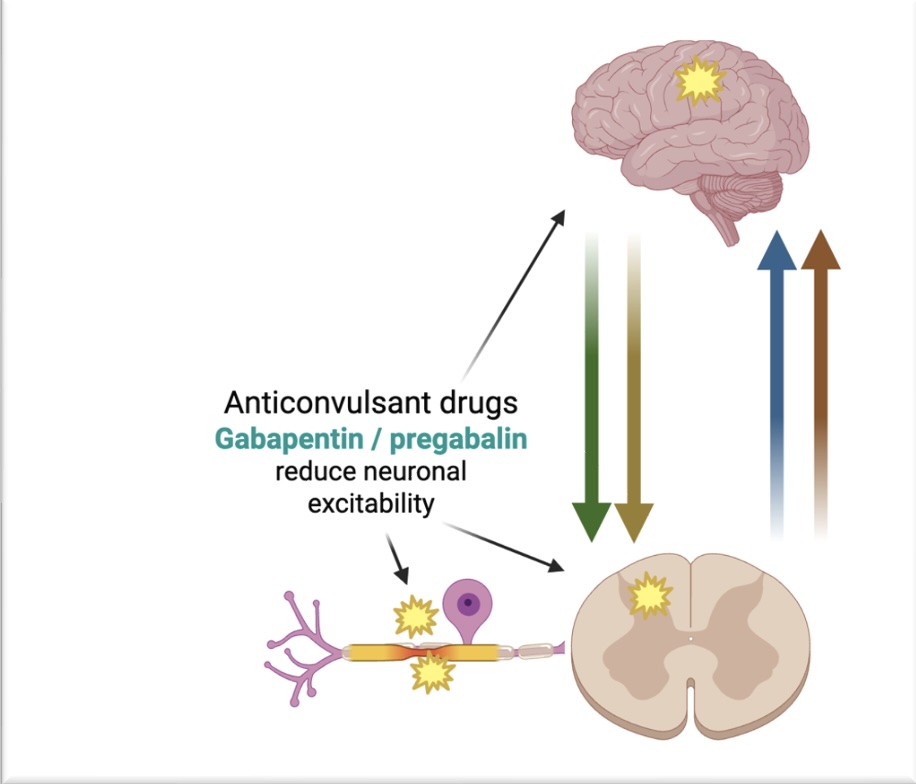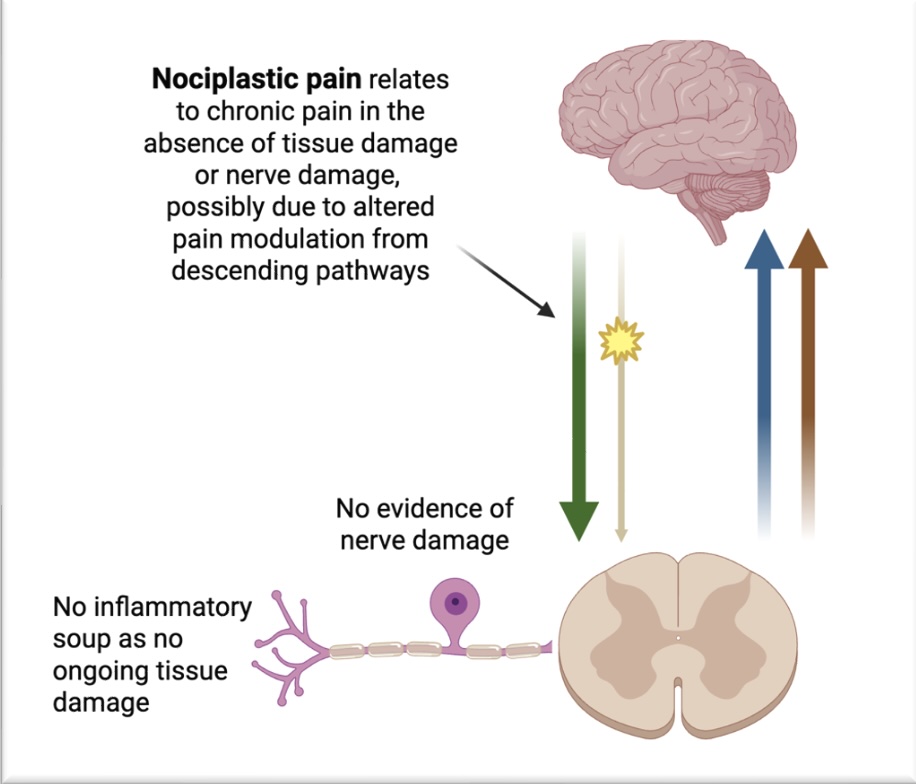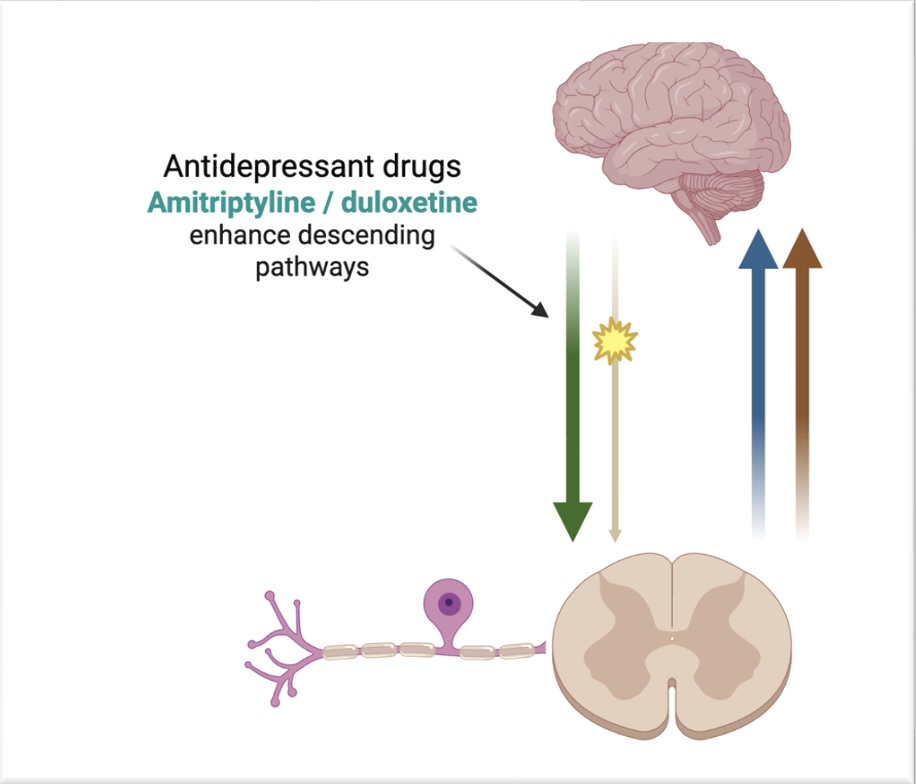Physiology and Management of Chronic Pain
Physiology and management of neuropathic and nociplastic pain
Chronic pain describes pain arising from a dysfunctional pain system. The pain experienced is just as real as acute pain following tissue damage, but has no clinical value.
We talk to patients about pain being the body's fire alarm: an important system to alert us to harm. Chronic pain represents a faulty fire alarm.
Chronic pain may be neuropathic, following damage to the peripheral or central nervous system, or nociplastic, reflecting a more general dysfunction of the descending pain modulatory pathways. The two may co-exist.
The rationale behind pharmacological management is described below, but long-term managment includes exercise, physiotherapy and psychological support to improve function and quality of life.
Physiology of neuropathic pain

Management of neuropathic pain
The aim of pharmacological treatment is to dampen down the ectopic activity.

Physiology of nociplastic pain

Management of nociplastic pain
The aim of pharmacological treatment is to enhance the descending modulatory pathways.

